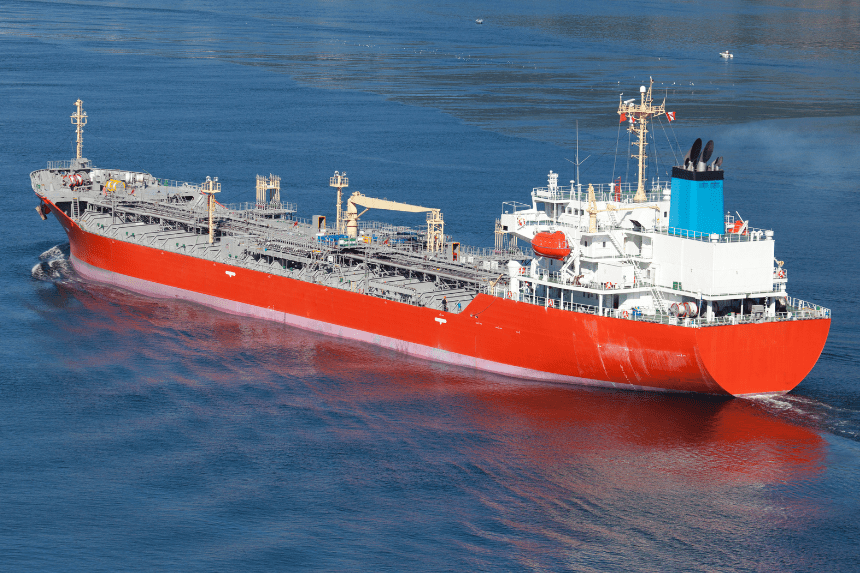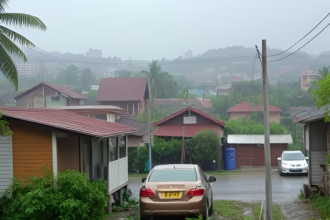In a rapidly escalating environmental crisis, authorities in India’s southern state of Kerala have declared a high alert after a cargo ship, loaded with hazardous chemicals and oil, capsized off the state’s coast in the Arabian Sea. The incident, which occurred near Kochi on Sunday, has raised alarms over the potential for a large-scale ecological disaster affecting both marine biodiversity and the livelihoods of thousands in the coastal region.
- The Kochi Incident: A Routine Voyage Turns into a Hazard
- Swift Crew Rescue, Growing Fears Over Oil and Chemical Spills
- Why Has Kerala Declared a Statewide Coastal Alert?
- Why Are Public Safety Measures in Place and Fishermen Being Warned?
- The Toxic Threat: What’s at Stake
- Pollution Control Measures Intensified
- Tourism and Ecology at Risk
- International Concerns and Flag Accountability
- Community and Environmental Groups Mobilize
- Conclusion
The Kochi Incident: A Routine Voyage Turns into a Hazard
The MSC ELSA 3, a container vessel flying the Liberian flag, left Vizhinjam port and was heading to Kochi. Indian Coast Guard reports suggest the ship began to list dangerously about 38 nautical miles southwest of Kochi on the evening of Saturday. Because flooding in one of its below-deck chambers caused the ship to capsize at 7:00 am on Sunday, a full-scale emergency operation was arranged to rescue and contain everyone.
The containers on board included 630 that were not hazardous and 13 that carried hazardous materials, along with 12 containers of calcium carbide, a substance quickly released by contact with water to give acetylene gas.
Swift Crew Rescue, Growing Fears Over Oil and Chemical Spills
All 24 crew members were saved because the Indian Navy and Coast Guard joined forces to carry out the rescue. A total of twenty-one sailors were rescued by the Coast Guard, and three more were picked up by the Navy during a tough mission that lasted hours in bad weather and on high seas.
Even though rescuing those on the vessel is a relief, the damage to the environment is now causing the most concern. On the ship, 73 containers have not been found, and a number of them are currently drifting toward Kerala, at a speed of up to 3 kilometers per hour, said the coastal surveillance service.
Why Has Kerala Declared a Statewide Coastal Alert?
The Kerala State Disaster Management Authority (KSDMA) and the Chief Minister’s Office quickly moved into action, declaring a high alert across the entire coastal belt of the state. The statement emphasized that the oil slick and chemical contaminants could affect any part of the Kerala coastline, a region renowned for its marine biodiversity and ecotourism.
“As the oil slick can reach anywhere along the Kerala coast, an alert has been sounded across the coastal belt,” the Chief Minister’s Office said. The warning covers all regions within proximity of the Arabian Sea, urging residents to remain vigilant.
Why Are Public Safety Measures in Place and Fishermen Being Warned?
Authorities have implemented a series of safety protocols to prevent public exposure to toxic substances. Residents in coastal areas have been strongly warned not to approach or touch any containers or oil slicks that might wash ashore. The KSDMA emphasized in a social media advisory, “Make sure to stay at least 200 meters away. Do not gather in groups near the area. Do not obstruct authorities while they are removing materials. Stay at a safe distance.”
Local fishermen have also been cautioned against venturing near the wreckage site, as the risk of underwater chemical reactions or oil contamination could severely threaten both safety and marine life.
The Toxic Threat: What’s at Stake
Among the most alarming revelations was the ship’s cargo manifest, which included:
- 13 containers of hazardous materials
- 12 containers of calcium carbide
- 84.44 metric tonnes of diesel
- 367.1 metric tonnes of furnace oil
Calcium carbide’s interaction with seawater could result in volatile gas leaks, potentially setting off fires or explosions. Moreover, the fuel reserves alone present a severe marine pollution hazard. The combination of these substances poses a twofold threat: immediate contamination of the sea and the long-term destruction of marine ecosystems.
Environmental experts have particularly raised concerns about the timing of the disaster. “If the spill spreads, it may harm marine productivity, especially during the monsoon—a critical period for pelagic fish breeding and growth,” noted a fisheries scientist. This season is vital for the fishing economy, and any disruption could affect hundreds of fishing families who depend on daily catch for their livelihoods.
Pollution Control Measures Intensified
Since a negative environmental impact is expected, the Indian Coast Guard has started its Pollution Response Preparedness Protocol. The Coast Guard promptly sent a boat carrying pollution control equipment to the site after the ship turned over.
The Coast Guard also sent a surveillance plane that could sense oil spills, helping officials see how much oil had leaked and where it was going. They have mainly focused on detecting where the spill is going and finding the drifting containers before they get to shore or could cause an explosion beneath the ocean.
Authorities said on Monday that efforts to clean up the oil were increased, as various agencies teamed up to protect affected areas and collect floating debris.
Tourism and Ecology at Risk
Kochi and its surrounding coastal stretch are not only significant due to marine biodiversity but are also key hubs for eco-tourism and international travel. With images of oil sheen spreading in the Arabian Sea and fears of toxic containers washing ashore, the tourism industry is on edge.
Beachfronts that usually host throngs of tourists, especially during the post-monsoon travel season, are now under watch and potential evacuation. If the hazardous materials reach shorelines, they could damage coral reefs, kill marine fauna, and destroy mangrove ecosystems that take decades to recover.
International Concerns and Flag Accountability
The ship, flagged under Liberia, has raised questions about the accountability of international shipping operators, especially when dealing with hazardous materials in ecologically sensitive zones.
While Liberia offers “flag of convenience” services to many global shipping operators, maritime watchdogs have criticized such registries for lax safety standards. Indian maritime authorities are now reportedly reviewing port protocols and regulatory mechanisms to ensure that cargo information is accurately declared and verified before docking or transit in Indian waters.
Community and Environmental Groups Mobilize
Local environmental NGOs have begun mobilizing efforts to support cleanup and raise awareness. Beach patrols, citizen reporting apps, and helplines have been activated to report any unusual debris, oil patches, or affected marine animals.
Additionally, volunteers have joined forces with coastal police and civic bodies to monitor the shoreline and ensure that safety advisories are followed. Awareness drives in schools and fishing villages are helping to communicate the seriousness of the situation to prevent accidental contact with hazardous materials.
Conclusion
The capsizing of MSC ELSA 3 near Kerala’s coastline serves as a dire reminder of the environmental vulnerabilities associated with maritime trade. While lives were thankfully spared due to timely rescue operations, the looming threat to Kerala’s coast—its people, ecology, and economy—continues to unfold.
With a multi-agency response underway and public vigilance being strongly encouraged, the coming days will be critical in determining whether India can avoid an environmental catastrophe or be forced to reckon with one of the worst maritime pollution events in its history.








